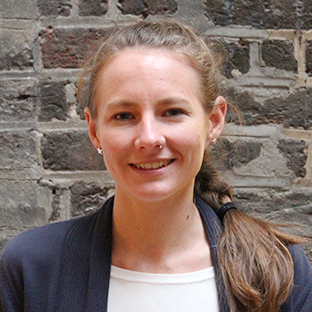We currently use 1.7 planets worth of resources a year. Indefinite growth is off the cards if we are to keep within earth’s ecological capacity to sustain us.
Money is something we use every day without pausing to think about how it came to be, what role it plays in our economy, and what the consequences are of how it’s structured. A seemingly ‘neutral’ object, money, carries huge implications for society and the environment we live in – something we should be reflecting on as we come to the end of the COP24 summit.
Let me start by explaining how money is created and why it doesn’t happen in the way many of us think it does.
The magic money tree?
Most of the public, mainstream macroeconomic academics, and even those working in the financial industry, view banks as intermediaries in the monetary system, taking deposits from lenders and giving loans to borrowers, but playing no role in the creation of money.
Money is understood to be created by central banks who control the amount in circulation (broad money) by determining the quantity of reserves (base money) private banks have to hold with them (a form of fractional reserve banking).
Consequently, the argument goes, we should trust efficient private banks operating in competitive markets to introduce the right amount of money into the economy - lending responsibly to governments, businesses and consumers to create maximum social value.
In reality, however, only 3% of the money supply in the form of physical banknotes and coins is created by the central bank, the remaining 97% is created electronically by private banks when they extend credit. Around five years after the financial crisis, the Bank of England finally decided to set the record straight, stating:
“.. rather than banks lending out deposits that are placed with them, the act of lending creates deposits — the reverse of the sequence typically described in textbooks” (Money Creation in the Modern Economy).
Does this mean there is a magic money tree after all?
Well, in short – yes. When private banks extend credit, the loan amount is added to the bank’s balance sheet both as an asset in the form of the loan, and as a liability in the form of a deposit in the customer’s account. These loans are created as interest bearing debt, and once repaid the interest on these loans stays in circulation as bank earnings. This profit can be set aside as capital, enabling banks to lend even more.
Bank lending is limited by capital and liquidity constraints – essentially they need to have enough capital to remain solvent if a consumer defaults on their loan, and enough cash to pay out to depositors wanting their money back – but as central banks act as a lender of last resort to private banks (as seen in the crisis) generally the more important determinant is how confident banks are that they’ll get their loans back.
So, what does this mean for the planet?
The extension of credit and creation of debt locks us into a need for evermore economic growth. During the ‘Great Moderation’ period from the early 1990’s right up until the financial crash, financial innovations allowed banks to securitise bundles of debt (dodgy mortgages) and sell them onto investors in secondary markets. Meaning these debts were removed off their balance sheets and they could lend out even more.
Alan Greenspan, former Chairman of the Federal Reserve, famously said:
“These increasingly complex financial instruments have contributed to the development of a far more flexible, efficient, and hence resilient financial system than the one that existed just a quarter-century ago”
He was wrong. Inequality, boom, bust and the consequent fallout are all inherently linked to how we create money.
In our current economic system, stability relies on growing consumption to sustain the need for an ever-expanding economy, and ever-expanding money supply. However, this growth is inherently tied to the use of finite natural resources.
We currently use 1.7 planets worth of resources a year and must recognise that indefinite growth is off the cards if we are to keep within earth’s ecological capacity to sustain us.
Somehow, we need to decouple economic growth from resource use, which would include heavy investment in renewables.
Governments may be “zombie-like” but the silver lining is that a huge number of financial investors seem to be shaking off their stereotypical short-term outlook and putting pressure on policymakers to do more.
Another idea is of course to move away from a growth paradigm, replace a culture of consumption with one of sufficiency and begin to rethink our relationship with the planet that so kindly puts up with all our bad behaviour.
What that means for how we create our money is anyone’s guess – can we move beyond money as debt which requires never ending growth? Do we need central bank credibility to maintain our confidence in the economic system? What about community currencies?
The first step is talking more about money (something the Brits hate to do!), how it’s created, and who benefits and suffers from the current system, which is anything but neutral.
Further reading:
Currencies of transition: Transforming money to unleash sustainability, Bendell, J., and Greco, T. (2013) (PDF, 1MB)
Our Money: Towards a new monetary system, Doorman, F. (2015) (PDF, 1MB)

Be the first to write a comment
Comments
Please login to post a comment or reply
Don't have an account? Click here to register.